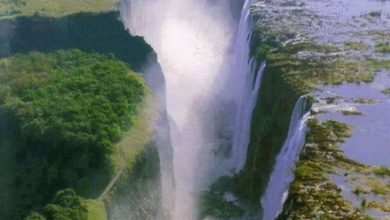The Last Stand: Zimbabwe’s Efforts to Protect the African Elephant

Beneath the ancient canopies of Zimbabwe’s forests and across the open plains of Hwange and Gonarezhou, a silent battle continues. Zimbabwe’s efforts to protect the African elephant have become a serious matter of conservation. It is also a symbol of resilience, heritage and the fight for ecological balance.
Conservation in Action: Zimbabwe’s Efforts to Protect the African Elephant
Zimbabwe is home to one of the largest populations of African elephants in the world. It also has stood at the forefront of wildlife protection in southern Africa. However, the pressures of poaching, habitat loss, and human-wildlife conflict have made Zimbabwe’s efforts to protect the African elephant more urgent than ever.
The African elephant, once roaming freely across vast territories, now faces growing threats from illegal ivory trade and shrinking natural habitats. Despite international bans on ivory sales, poaching remains a real concern. In response, Zimbabwe has intensified its national conservation strategies. Combining community involvement, surveillance technology and Transfrontier collaborations to turn the tide is underway.
One of the most notable programs has been spearheaded by the Zimbabwe Parks and Wildlife Management Authority (ZimParks). The organisation has adopted satellite collaring and drone surveillance to monitor elephant movements. These tools help rangers respond swiftly to threats while gathering crucial data for long-term conservation planning. Simultaneously, local rangers in Hwange National Park risk their lives daily to patrol boundaries and protect vulnerable herds.
Protecting Elephants in Zimbabwe: A Regional Commitment
Zimbabwe is not working alone. Through regional initiatives like the Kavango-Zambezi Transfrontier Conservation Area (KAZA TFCA), the country cooperates with neighbouring nations to manage shared elephant populations. This cross-border collaboration strengthens wildlife protection in Zimbabwe, by creating migratory corridors and joint response systems.
Furthermore, Zimbabwe is pushing for more autonomy in managing its elephant population. It has over 100,000 elephants, almost twice the ecological carrying capacity. Zimbabwe argues for sustainable elephant management policies that include regulated trade and community revenue models. Though controversial, this approach highlights the complexity of balancing species protection with rural livelihoods.
In communities adjacent to conservation areas, education and empowerment are critical. Through initiatives like CAMPFIRE (Communal Areas Management Programme for Indigenous Resources), villagers are engaged as custodians of wildlife. In return, they receive financial benefits from tourism and hunting permits. This model transforms elephants from perceived threats into shared resources worth preserving. Stories from Hwange and Mbire Districts reveal how families now view elephant protection as part of their future prosperity.
African Elephant Conservation in Zimbabwe: Challenges and Hope
Still, challenges persist. Droughts, worsened by climate change, push elephants closer to human settlements in search of water. This increases tension and sometimes tragedy. In turn, African elephant conservation in Zimbabwe must now incorporate climate adaptation strategies. Artificial watering holes, seasonal migration data and community warning systems are being explored as solutions.
Despite all these hurdles, Zimbabwe’s efforts to protect the African elephant remain a global example of adaptive conservation. Organisations like Wildlife Conservation Society, WWF and Elephant Crisis Fund continue supporting local initiatives. They recognise that what happens in Zimbabwe matters far beyond its borders.
At the heart of this story is not just a species, but a connection between people, land and legacy. Protecting elephants protects ecosystems. And ecosystems sustain lives.
Sustaining the Giants: The Future of Zimbabwe’s Elephant Protection
Looking forward, the success of Zimbabwe’s elephant protection strategies, will rely heavily on international cooperation. It also hinges on technological innovation and above all, local commitment. From anti-poaching rangers to ecotourism guides, every Zimbabwean involved in this mission carries the weight of history and the hope of future generations.
For Zimbabwe, this is more than a wildlife issue — it is a moral and ecological imperative. The African elephant is a national treasure, a global wonder and a keystone species. It also defines the wild heartbeat of southern Africa. Zimbabwe’s efforts to protect the African elephant are, indeed, its last stand — one that the world must watch, support and learn from.





